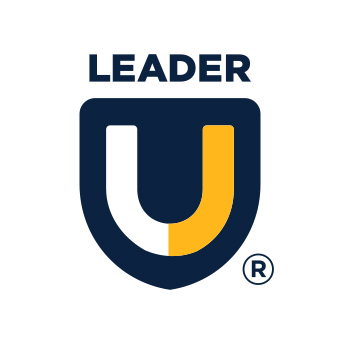The Future of Higher Education: Trends to Watch

In recent years, college enrollment has significantly declined, with data from the National Student Clearinghouse Research Center showing a 2.6% drop in 2021 compared to the previous year, which had already seen a decrease from 2019. This trend is particularly evident in community colleges and among 18- to 20-year-old freshmen. To address these challenges, colleges must adapt to changing student expectations by offering more flexible learning options, enhancing faculty support, and improving communication channels. Building a sense of community, providing robust student support services, and helping students with career opportunities are essential strategies. Platforms like LeaderU can assist institutions in fostering essential skills and improving student engagement and success.
Declining College Enrollment: What Students Want in Higher Education
This is a great way to get moving w us
Yo here is content. Yo here is content. Yo here is content. Yo here is content. Yo here is content. Yo here is content. Yo here is content. Yo here is content. Yo here is content.

Colleges have faced some major challenges in the past couple of years, as reflected by their enrollment for undergraduate students. The National Student Clearinghouse Research Center’s data for October of 2021 shows that college enrollment has fallen 2.6% below last year’s level at this same time—which had already dropped in 2019, as well. Freshman enrollment in community colleges has shown particularly steep declines, and the number of college students from ages 18 to 20 (typically over 90% of the freshman enrollment population) is falling across almost all demographics.
Most college-age students starting their college career in fall 2015 completed their bachelor’s degree at the same institution within six months or less. 67 % versus 60% for men and 66 % for women graduated. The retention statistics represent a percentage of undergraduates returning to the same college in the fall following graduation. Graduation rate represents the percentage of first-time, full-time college students completing programs from a different university over specified periods.
So, what can colleges and universities do to help students enroll confidently? They need to recognize that student expectations have changed.
Students are still looking to get the most bang for their buck, knowing the skills they learn in college will enable them to enter the workforce upon graduation. However, it’s important to note that many college attendees are now seeking more flexible learning options from their universities to help them achieve those career goals. Faculty support and communication are more important than ever as students seek to avoid losing academic rigor from professors who cannot adapt to online teaching and missed opportunities to connect with their classmates regarding assignments. Colleges and universities can build confidence in prospective students when they show how they’re meeting and exceeding the needs and expectations of the incoming class.
Effective Communication Strategies: Shaping the Future of Higher Education
We have no shortage of communication channels, and higher education is no exception. With many colleges and universities hosting social media accounts, online publications, emails and physical letters, there are plenty of chances to share information with students. That information should be shared clearly, authentically, and often.
Make an effort to connect new students to the appropriate specialized communication channels for their major, housing group, and special interests. Keystone Academic suggests building specific landing pages on university websites, as well as connecting students to individuals like college deans, older student mentors, or alumni. They also recommend engaging in relatable ways like video, providing messages that are targeted to students in both tone and topic.
Communicate openly and often. Even if you don’t feel like you have all the answers, students will appreciate knowing that your campus is making an effort to be transparent. Address the specific needs and challenges of current students, such as mental health, readiness for college-level courses, and personalized support for nontraditional students.
Building a Strong Campus Community: Strategies for Colleges
We all know that building community is harder to do in a hybrid environment and higher education is no exception. Some students are able to live on campus and attend class in person, but many traditional student life activities have paused or changed. It’s also crucial to prepare for the needs and well-being of future students, ensuring they are ready for academic challenges and have access to desired programs.
It’s important to make social activities accessible to all of your student population. There are many online collaboration tools that can help students connect with one another and their university organizations. Virtual coffee hours with job recruiters, Slack threads, TikTok competitions, and Netflix parties are all useful in facilitating connections and breaking the ice for collaborators unable to meet in person. With planning and inclusion, you can help students build better relationships with their professors and peers.
Why Engaged Faculty and Student Success Services Are Crucial for College Success
In the spring of 2020, McKinsey conducted a student enrollment survey in anticipation of the upcoming fall semester. The survey discovered students largely feel more confident with in-person learning. In the event an institution were to move to remote learning, students would need confidence in their ability to make the transition to virtual learning. Of the students surveyed, 25% affirmed they would feel more confident in enrolling the following semester if they could sit in on an online class and observe how it was conducted. These services are crucial for enhancing student success and student engagement.
The same survey reviewed how emotional readiness can also be compromised given recent changes to schooling, stating “many students will not be as emotionally or academically prepared to enter college as they may have been otherwise, providing mental-health resources and remedial-help options as well as helping connect students with social service organizations can fill that gap.” The likelihood of hybrid learning, changing plans, and a diminished campus experience means that colleges need to find new ways to serve students and provide the soft skills that will help them be successful after graduation–including the ability to be mentally flexible in the face of changing expectations, both academically and career-wise. Degree completion programs play a vital role in supporting student success by offering pathways for students to finish their degrees efficiently.
Key Strategies to Help Students Find Career Opportunities
Students have historically expected their chosen institution to help them land a great internship or full-time job. In 2016, a team at UCLA published research on fifty years of freshmen college students, citing that between 2009 and 2015, over 80% of the students they surveyed said “to be able to get a better job” was a “very important” factor in their decision to go to college. The skills employers seek are significantly different than pre-pandemic, as resilience and socio-emotional skills have become highly valued in the jobs students seek preparation for.
Likewise, the importance of degree programs in career preparation cannot be overstated. The process of finding a job has changed significantly. Universities often host career fairs and recruiting events. However, more hybrid and online classes may make those opportunities less accessible to some students. That means colleges have to be more intentional about how they offer career services. Virtual job fairs, career newsletters, and resume-building workshops are ways universities can ensure their students are finding the best career opportunities–and are prepared to succeed in those roles once they obtain them. Improving graduation rates is also crucial for student success, ensuring that students complete their programs and are well-prepared for their careers.
How Can LeaderU Help?
LeaderU is an interactive platform that empowers educational institutions to support college students in developing leadership, wellness, and career readiness skills to succeed now and in the future. The platform integrates with your LMS and gives students access to the same course content FranklinCovey uses to train leaders at organizations worldwide. Courses can be instructor-led, blended, or self-paced and are based on international bestselling books and hundreds of thousands of client engagements, including those in health sciences. LeaderU can be used in academic courses, extracurricular student programs, freshman seminars, etc. With LeaderU, students develop essential career skills and earn industry-recognized credentials from FranklinCovey to help them stand out in the job market. Click here to learn more.








